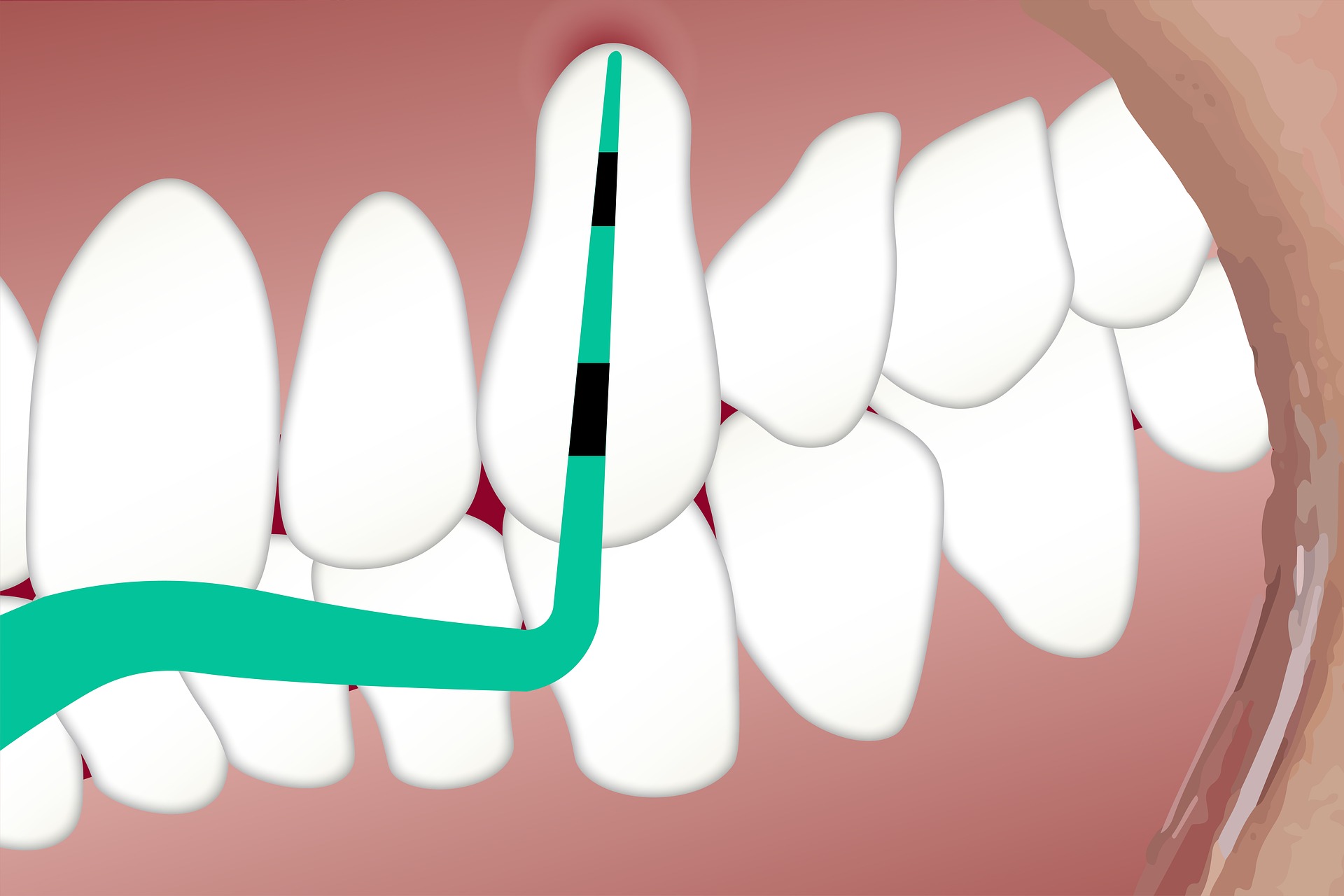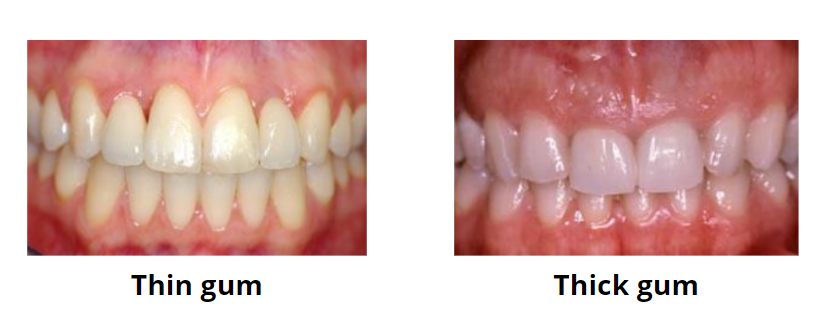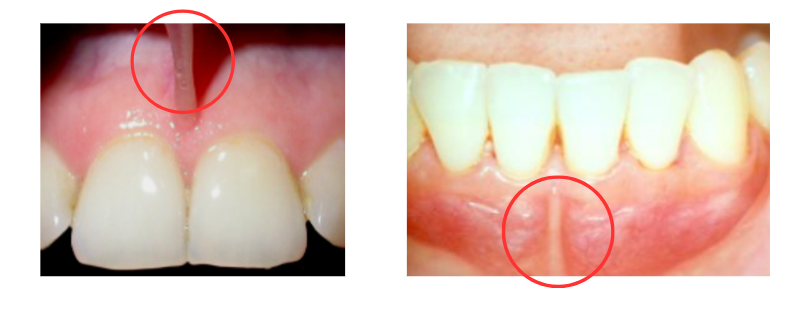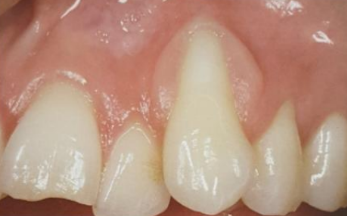When Your Gums Start to Recede: What You Need to Know
 Gum recession is a common condition that affects many people and can lead to various dental issues.
Gum recession is a common condition that affects many people and can lead to various dental issues.
When gums pull back from teeth, more of the roots are exposed, making teeth sensitive, more prone to decay and longer, which can impact the appearance of your smile.
Read on to learn more about the causes, symptoms, and treatment options for receding gums.
In this article
1. What is gum recession?
2. What are the symptoms of receding gums?
3. What are the primary causes of gum recession?
4. What makes some people more susceptible than others?
5. How to stop your receding gums from progressing further?
6. What can happen if gum recession is left untreated?
7. Surgical options to cover exposed roots
8. What can I expect after surgery and in the long term?
What is gum recession?
Gum recession is a condition where the gum tissue pulls back from the teeth, exposing more of the roots. This can make your teeth appear longer and result in other issues such as sensitivities, root decay, and aesthetic concerns.In most cases, the recession progresses slowly over time. This means that your gums will not recede overnight. That's why you probably won't notice it until you're in your 40s, or if you start experiencing symptoms such as sensitivity.
What are the symptoms of receding gums?
If you notice any of the following signs, it's important to see your dentist as soon as possible. Early treatment can help prevent further recession and protect your teeth and gums from additional damage.- Tooth sensitivity: As the gums recede, the exposed tooth root may become more sensitive to hot, cold, or sweet foods and drinks.
- Visible recession: You may notice that your teeth look longer than usual, or that small gaps—known as black triangles—have appeared between them.
- Gum inflammation: The gums around the tooth may appear red, swollen, or tender to the touch—common signs of gum disease.
- Tooth mobility: In advanced stages of gum recession, the affected tooth may become loose or shift out of position.
- Pain: Receding gums may cause discomfort or pain, especially when brushing or flossing.
What are the primary causes of gum recession?
Gum recession is often the result of a combination of several factors. But the most significant causes are the following:- Gum disease: This is the most common cause of gum recession. When plaque and tartar build-up around your teeth, they irritate your gums and lead to inflammation. If left untreated, it can damage the supporting structures of the teeth, causing the gums to recede.
- Trauma: Physical trauma or injury to the gums, such as from aggressive tooth brushing, piercing, or other hard objects, can irritate your gums and cause them to recede. Trauma-induced gum recession usually affects only one or a few teeth.
- After scaling and root planing: Scaling and root planing are common and effective treatments for gum disease. They help remove plaque and tartar and provide healthy conditions for healing. However, sometimes they can cause your gums to recede. Unlike what you may think, this can be a good thing because it means the inflammation is decreasing and your gums are getting better. Since your gums are no longer swollen, you may notice more roots showing up, which is normal.
What makes some people more susceptible than others?
Certain people may be more prone to gum recession due to several factors, including:1. Anatomical factors:
People with naturally thin or delicate gum tissue may be more prone to gum recession, as their gums may be less able to withstand the forces of brushing or other trauma.
2. Frenulum insertion:
The frenulum is a small fold of tissue that connects the lips or tongue to the gums. In some cases, the frenulum may be attached too close to the gum line, which can put stress on this area and contribute to gum recession.
3. Dental crowding:
Crowded or misaligned teeth can trap more plaque and disrupt the shape of the gums. This can also contribute to recession over time.
4. Smoking:
Smoking is a major risk factor for inflammatory gum disease, which is the main cause of gum recession. Smoking reduces blood flow to the gums and weakens the immune response against bacteria. This can significantly increase the risk of gum disease and accelerate its progression. Other factors that can increase the risk of gum recession include:- Certain medications – Especially those that cause dry mouth, which reduces the protective effects of saliva.
- Medical conditions that weaken the immune system – Such as diabetes.
How to stop your receding gums from progressing further?
Once the gums recede, it is impossible to regrow them without surgery. However, it's possible to stop their progression. Here are some tips to stop them from getting worse:- Treat gum disease: If your gum recession is caused by periodontal disease, the only way to stop it is with a deep dental cleaning (scaling and root planing) performed by your dentist. The goal is to thoroughly clean the tooth surfaces and remove bacteria from the deepest areas that your toothbrush cannot reach.
- Maintain good oral hygiene: Brush your teeth twice a day with a soft-bristled toothbrush and fluoride toothpaste. Floss or use an interdental cleaner daily to remove plaque and food particles from between your teeth and along the gumline.
- Balance your diet: Make sure to include essential nutrients—like vitamins and minerals—that have anti-inflammatory and antioxidant properties and help strengthen your gums and immune system.
- Use a mouthguard: If you grind or clench your teeth, talk to your dentist about getting a custom mouthguard to protect your teeth and gums from damage.
- Quit smoking: Smoking can be so devastating to your gums and overall oral health. Tobacco contains hundreds of toxins that weaken the immune system and reduce blood flow to the gums, making them more vulnerable to damage and disease.
- Improve your brushing technique: Brushing too hard or using a toothbrush with stiff bristles can contribute to gum recession. Use a soft-bristled toothbrush and gentle circular motions to clean your teeth and gums.
- Visit your dentist regularly: Regular dental checkups and cleanings help control plaque and tartar buildup and allow your dentist to catch any issues early, when they are easier to treat.
What can happen if gum recession is left untreated?
If gum recession is left untreated, it can lead to several problems.For some people, gum recession may not progress and remain stable over time. But this is not always the case.
Gum recession can continue to evolve, leading to further exposure of the roots, increased sensitivity, and a higher risk of tooth decay and tooth loss.
As gum recession progresses, it can make your teeth appear longer and affect the overall appearance of your smile.
Surgical options to cover exposed roots
You may want to cover your exposed roots if the recession is causing you sensitivity or cosmetic problems.Several techniques can be used depending on your needs and the severity of your condition. Here are some common solutions:
- Pedicle flap technique: This is a surgical procedure in which a small flap of gum tissue is cut from nearby healthy tissue and rotated over the exposed root to cover it. This technique is often used for mild to moderate cases of gum recession.
- Gum graft surgery: In this procedure, tissue is taken from another part of your mouth, such as the roof of your mouth, and grafted onto the affected area to cover the exposed root. This technique can be done with your own tissue (autograft) or with tissue from a donor (allograft). Allografts are a good option for patients who don't have enough healthy tissue to donate, or who want to avoid a second surgical site.
- Guided tissue regeneration: This technique is an alternative to gum grafting that helps regenerate the tissues destroyed by gum disease. The method involves placing a special membrane on the exposed root. The membrane helps new cells grow and can help rebuild the tissue around your tooth.
- Platelet-rich plasma and growth factors: This technique involves using your own blood, which is drawn and processed to create a concentrated solution of growth factors and platelets. This solution is then applied to the affected area to promote tissue regeneration and healing.
What can I expect after surgery and in the long term?
While not everyone needs a gum graft, it can be beneficial for you to strengthen your gums and prevent further recession.After gum graft surgery, you can expect some swelling, discomfort, and sensitivity in the treated area.
Your dentist will give you instructions on how to care for your gums during the healing process. This may include avoiding certain foods, using an ice pack to reduce swelling, and taking pain medication if necessary. You may also need to rinse your mouth with a special mouthwash or salt water solution to help keep the area clean.
In the long term, gum graft surgery can provide several benefits. It can help protect your teeth from further damage, reduce sensitivity, and improve the appearance of your gum line.
Proper oral hygiene and regular dental check-ups can help maintain the long-term success.
- Etiology and occurrence of gingival recession - An epidemiological study https://www.ncbi.nlm.nih.gov/pmc/articles/PMC4753713
- Gingival recession: its causes and types, and the importance of orthodontic treatment https://www.ncbi.nlm.nih.gov/pmc/articles/PMC4944726/
- Gum Disease https://www.mouthhealthy.org/all-topics-a-z/gum-disease/